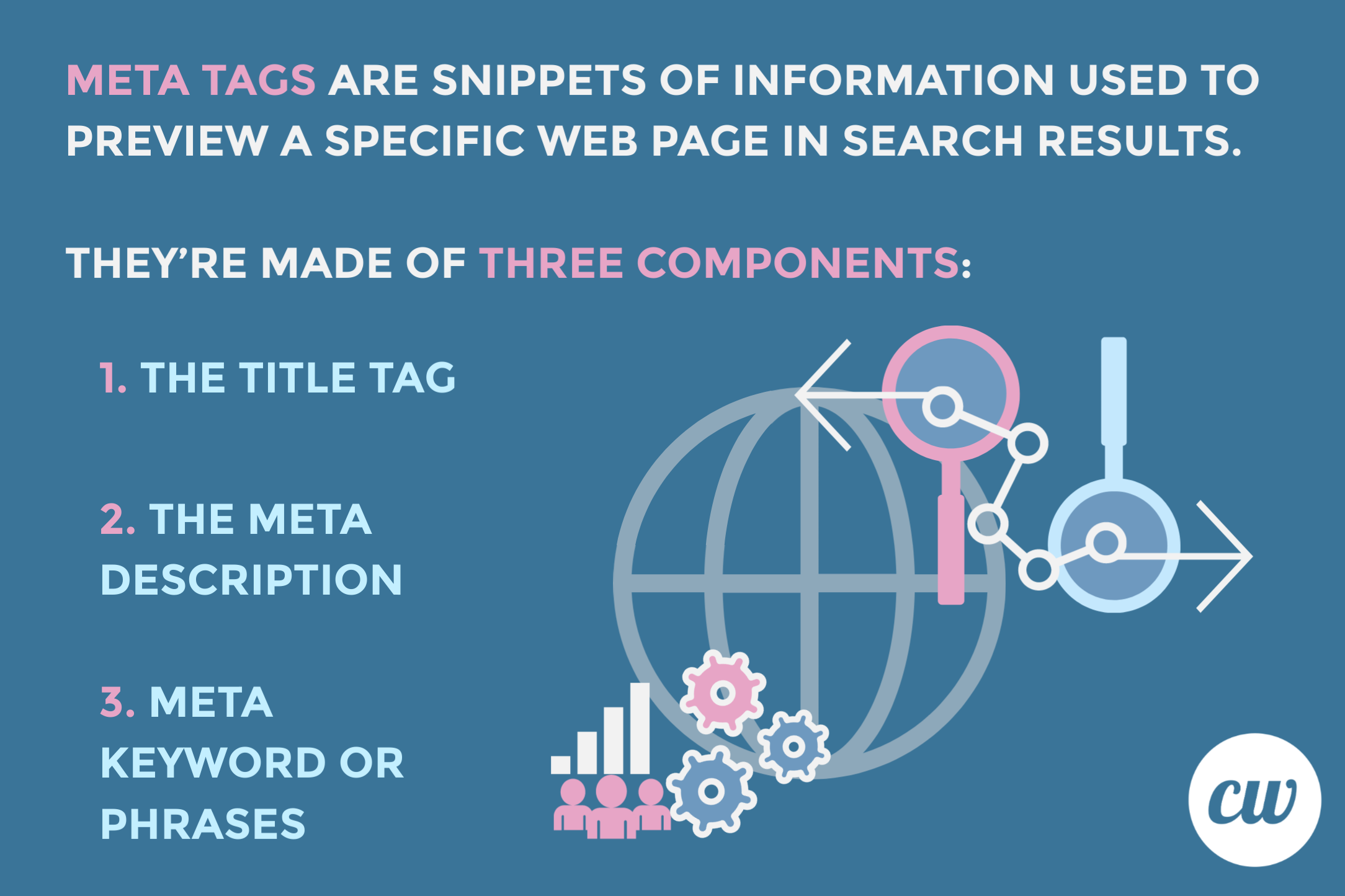
Optimal Meta Description Length and Metadata Best Practices
The optimal meta description length is between 150 and 160 characters. Keeping it under 160 characters ensures consumers will see the whole message on the results page since Google truncates longer paragraphs. A shorter description may not provide enough information for readers.
Well-crafted metadata accurately describes your web page’s content. It confirms consumers will find what they want on your page and invites them to click through and find out more.
The Purpose of a Meta Description
Metadata has a dual purpose of addressing both consumers and search engines. For consumers searching online for your products or services, the meta description serves as advertising copy. It pulls them from the search results page to your website. A readable, concise, and compelling paragraph improves the click-through rate (CTR).
Google says it doesn’t include the meta description in its SEO ranking algorithm. However, CTR does impact SEO, therefore, a description with targeted keywords that will prompt users to click on your link will improve SEO results.
How to Write a Winning Meta Description
A page’s meta description may be the first interaction your business has with a customer. A good meta description intelligently summarizes the page’s content. It naturally uses the primary keyword phrase, includes a call-to-action, and is unique.
Here are six best practices to strategically optimize your metadata:
1. Include the Focus Keyword Phrase
When the keyword phrase in your metadata matches the user’s search query, Google highlights it in bold text. This draws the reader’s eye and affirms that your page is a match.
Google doesn’t always select and post the meta description you included on your page. It may select other text from the document. Meta descriptions, including the keyword search term, are most likely to be posted.
2. Use Active Voice
Active voice creates faster-moving and more engaging copy. To invite readers to your page, think about their possible mindset and motivation as they are searching for your product, service, or information.
Web-users tend to scan pages, taking in headlines before reading additional details. Make sure that your description isn’t dull or cryptic. Start with an action word to engage readers. Follow through to inform them what to expect on your page.
3. Include a Call-to-Action
The meta description tag functions like advertising copy because of its prominent visibility on the search results page. It becomes an integral part of search marketing. People who click on your website and stay on it for some time inform Google your page is useful and relevant, which helps in page ranking.
A readable, compelling description uses your primary keywords and draws the eyes of consumers. A call-to-action gives them a reason to find out more.
4. Ensure Title and Description Accurately Represent the Content
The title is often your first contact with consumers as they scan the results page. It signals search engines the topic of your page.
Click-bait headlines designed to get attention work against your SEO ranking. When a title and description build unrealistic expectations in readers’ minds, they don’t spend long on the page. This informs Google your content is not relevant and useful.
Carefully crafted meta titles are essential because they show up in three different online locations: search engine results pages, web browsers, and social networks.
5. Avoid Duplicate Meta Descriptions
An important basis of SEO is useful and unique content. Duplicate meta descriptions defeat their purpose and confuse the reader and search engines.
To maximize each page’s SEO potential, make each meta description specific to that page.
6. If You Have Specifications, Share Them
Tech-savvy shoppers or buyers looking for a specific product appreciate specifications in the meta descriptions. It confirms immediately that you have what they want.
Where appropriate, focus on the technical specs like the manufacturer, SKU, price, or highly desired features. If the user is specifically looking for that product, the specifications can provide quick and easy confirmation.

How to Write a Meta Title
The optimal length for a meta title is between 50 and 60 characters because this is all that will display on the Google results page. Your best title will be a concise and accurate description of the webpage’s content.
Include your keyword phrase in the title, as close to the front as possible. However, remember to write your title for humans as well as search engines. Keywords may get you on the results page, but humans clicking through and staying on your site helps you stay there.
Start with an engaging action word, if possible, and avoid using stop words. Stop words are functional fillers with little or no keyword value like the, an, a, and, but, or, while, of, that, on, for, or which.
If you include site branding in the title, put it at the end.
Do You Always Need a Meta Description?
For most pages, it is wiser to customize your meta description and control that marketing copy.
In some cases, it’s okay not to write a meta description.
If your page targets three or more long-tail keywords, it’s not possible to fit them all into a 155-character meta description. If you leave it blank instead, the search engine scrapes the article to populate the meta description. It will often automatically include the keywords the consumer used. This will increase the relevance of your meta description with each search.
The downside of a blank meta description is social sites like Facebook will not scrape the article for a relevant paragraph. Instead, they are likely to use the opening text to your article, which may not include the details readers want.
Even when you include a meta description, the search engine may opt to show another section of your text instead.
For Humans and Search Engines
Your metadata is the part of the entry-way to your business. Each web page and blog represents specific information. Well-crafted metadata alerts the right audience to the page’s content and invites them to find out more.
Your meta description is a crucial signal to let search engines know what to expect on your page, but it’s also your first point of contact with potential new customers. For all the time and effort it takes to rank on the first page for your target keyword phrases, it’s worth making sure your metadata is accurate and inviting.
онлайн заявка на ипотеку во все банкиJoan Weisman’s strong research skills, SEO knowledge, adaptability of style and voice, and passion for staying current make her an asset for freelance web content, SEO, and copywriting.





